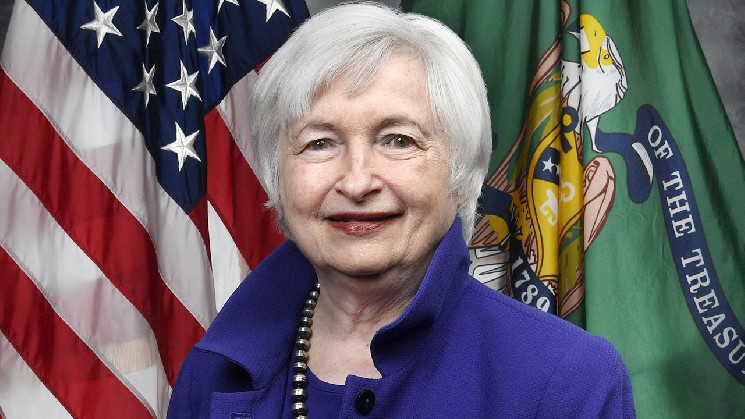Looming U.S. Default Risk Pushes Investors To Trim Some Debt Exposure

Bond investors are beginning to cut holdings of U.S. debt to prepare for a possible government default that they see as very unlikely but potentially seismic for financial markets around the globe.
The U.S. Treasury reached its $31.4 trillion borrowing limit in January. Unless congress lifts or abolishes that cap, the government could start to default on bonds that prop up the global financial system and are deemed some of the safest investments.

Some bond managers have begun to adjust short-term exposure to Treasuries to skirt losses during the period when the government may deplete its ability to pay its bills. Making preparations for a potential default is difficult, partly because of uncertainty over how much revenue the Treasury will amass from Americans filing income taxes in April.
Goldman Sachs Group Inc’s (GS.N) asset management arm is trimming its exposure to Treasuries that could be hit by the political standoff.
“You have to be thinking about what instruments you own, what maturities,” said Ashish Shah, chief investment officer for public investing at Goldman Sachs Asset Management (GSAM), which manages more than $2 trillion. “Just because you own an instrument like a T-bill doesn’t mean that you sit there and let it mature — you may want to trade out of it.”
Investors need to actively manage their positions during a prolonged tumultuous period in which borrowing negotiations could upset markets, Shah said. The Federal Reserve’s path of interest-rate hikes makes the situation stickier, said Shah.
In January, U.S. Treasury Secretary Janet Yellen said the government could only settle its bills through early June without raising the limit, but some analysts have forecasted that it will be the third or fourth quarter before the government depletes its cash and borrowing capacity. The Congressional Budget Office cautioned it could happen between July and September.
The Treasury bills yield curve shows investors are asking for higher returns to hold debt due in August, flagging that it is deemed riskier than other maturities.
Wider spreads between Treasury bill yields and matched-maturity overnight index swap (OIS) rates – a gauge for future policy rates – in mid-August indicate views that bills maturing then bear a higher risk of a default payment, said Jonathan Cohn, head of rates trading strategy at Credit Suisse (CSGN.S) in New York.
“A kink (in the Treasury bill curve) has become evident through mid-August where the latest 6-month bill issues mature,” he said.

Bid yields of Treasury bills
Standoffs over the debt limit in the previous decade have mainly been resolved without causing deep financial turmoil. But Republican lawmakers with a small majority in the U.S. House of Representatives could refuse a compromise with Democratic President Joe Biden, which in turn could rile markets.
Bond investors are navigating uncertainty around what they’re referring to as the X-date, when the government can no longer satisfy its payments. An actual default is regarded as an event with a low possibility but potentially high impact. It could send shockwaves through global markets and lift borrowing costs for both the U.S. government and corporations.
“The probability of a default is very low, but I’m okay telling my clients to avoid T bills with a six-month maturity … That is probably the most concrete way in which we’re approaching this,” said Ed Al-Hussainy, senior interest rate strategist at Columbia Threadneedle.
Al-Hussainy may also purchase Japanese yen, because a U.S. default would possibly challenge the safe-haven status of the U.S. dollar and prompt investors to look for protection in other currencies, he said.






 Bitcoin
Bitcoin  Ethereum
Ethereum  Tether
Tether  USDC
USDC  TRON
TRON  Dogecoin
Dogecoin  Cardano
Cardano  Bitcoin Cash
Bitcoin Cash  Zcash
Zcash  Chainlink
Chainlink  Monero
Monero  LEO Token
LEO Token  Stellar
Stellar  Litecoin
Litecoin  Hedera
Hedera  Dai
Dai  Cronos
Cronos  OKB
OKB  Tether Gold
Tether Gold  Ethereum Classic
Ethereum Classic  KuCoin
KuCoin  Gate
Gate  Algorand
Algorand  Cosmos Hub
Cosmos Hub  VeChain
VeChain  Dash
Dash  Tezos
Tezos  TrueUSD
TrueUSD  Stacks
Stacks  IOTA
IOTA  Decred
Decred  Basic Attention
Basic Attention  Theta Network
Theta Network  NEO
NEO  Synthetix
Synthetix  Qtum
Qtum  0x Protocol
0x Protocol  Ravencoin
Ravencoin  DigiByte
DigiByte  Nano
Nano  Zilliqa
Zilliqa  Holo
Holo  Siacoin
Siacoin  Numeraire
Numeraire  Ontology
Ontology  Waves
Waves  Status
Status  BUSD
BUSD  Hive
Hive  Enjin Coin
Enjin Coin  Pax Dollar
Pax Dollar  Lisk
Lisk  Steem
Steem  Huobi
Huobi  NEM
NEM  OMG Network
OMG Network  Bitcoin Gold
Bitcoin Gold  Augur
Augur  Bitcoin Diamond
Bitcoin Diamond  Ren
Ren